Discover the top things to do in Antequera with Ruralidays and explore the must-see spots in this charming town. We’re sure you’ll fall for its charm!
Antequera is located in the heart of Andalusia, a title it proudly carries thanks to its strategic position at the crossroads between Seville, Málaga, Granada and Córdoba, as well as its remarkable historical and artistic heritage.
This town is one of the largest in the province of Málaga and one of the most expansive in all of Spain. It has long been a stopover for travellers, many of whom have left their mark, contributing to Antequera’s rich cultural and architectural legacy.
Whether you’re planning a weekend getaway, mapping out your next holiday, or just exploring unique destinations across Andalusia, this guide will walk you through the best things to do in Antequera so you can make the most of your visit.
What to do in Antequera, Spain
If you prefer watching over reading, we’ve put together a video tour of Antequera that takes you through many of its highlights. Prefer to read at your own pace? No problem, right after the video we walk you through everything in detail. Press play and join us on this adventure!
Home to 75% of Málaga province’s historical and artistic heritage, Antequera is one of the most monument-rich towns in Andalusia. If you want to make the most of your visit, there are some must-see sites you simply shouldn’t miss.
Among the top things to do in Antequera, make sure to check out the following museums, monuments, and points of interest:
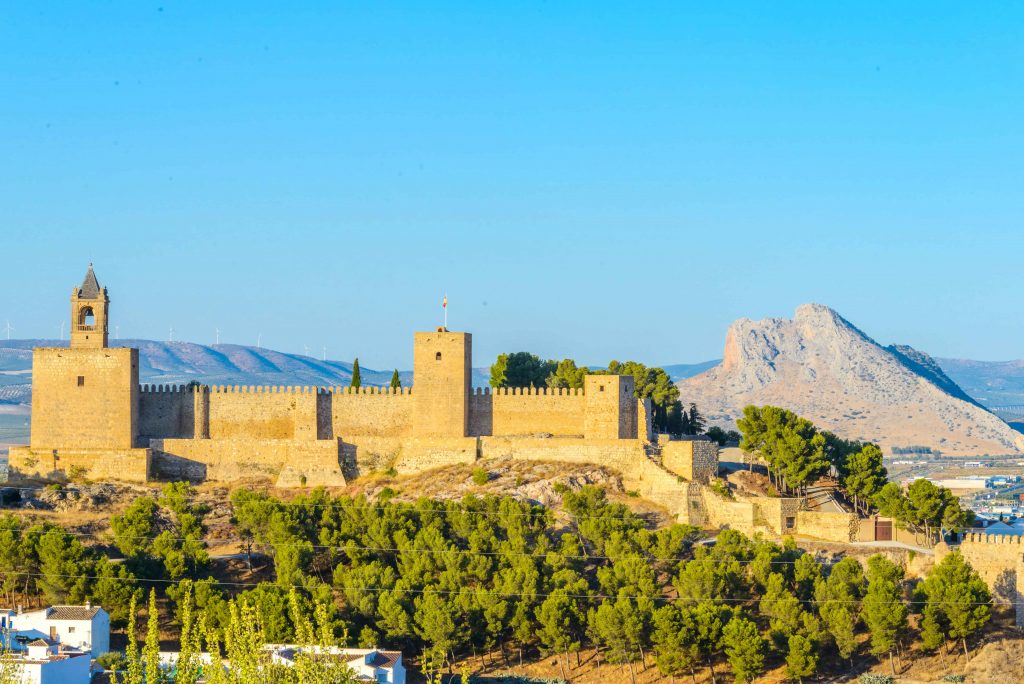
- The Alcazaba, listed as a Site of Cultural Interest, is especially known for its Torre del Homenaje, the widest of all Muslim fortress towers, second only to the Calahorra in Gibraltar.
- The Dolmens of Menga and Viera and El Torcal de Antequera mark the earliest traces of human presence in the area, dating back to the Paleolithic period. You can find more information about these natural formations and prehistoric monuments in this post
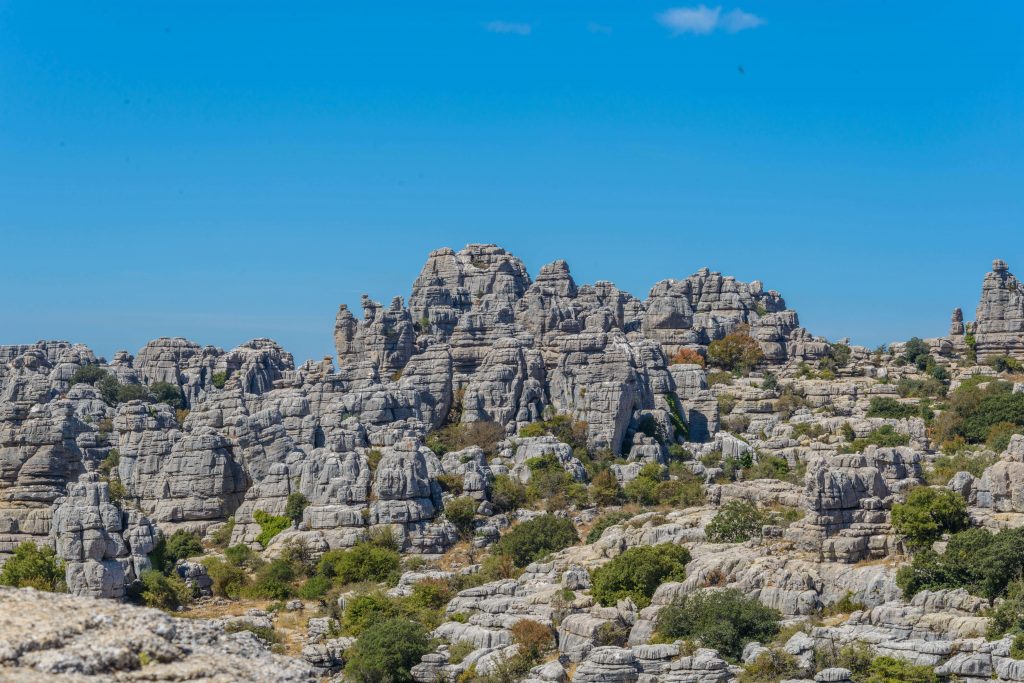
- Municipal Museum. Located in the 18th-century Palacio de Nájera, this is one of the most important museums in Andalusia. It offers a comprehensive look at the history of Antequera and its surrounding lands through a wide collection of archaeological, historical and artistic pieces. The museum also features workshops and a 360° immersive room that digitally recreates “Correr las Vegas”, a unique tradition from Antequera’s Holy Week.
- Convento de Belén, famous for its mantecados and other high-quality artisanal sweets, all handmade by the convent’s resident nuns. These treats are available for purchase inside the convent itself.
- Real Colegiata de Santa María la Mayor.This 16th-century Renaissance building is the most important of its kind in the city. It was also the first column-based church in Andalusia and one of the earliest in all of Spain.
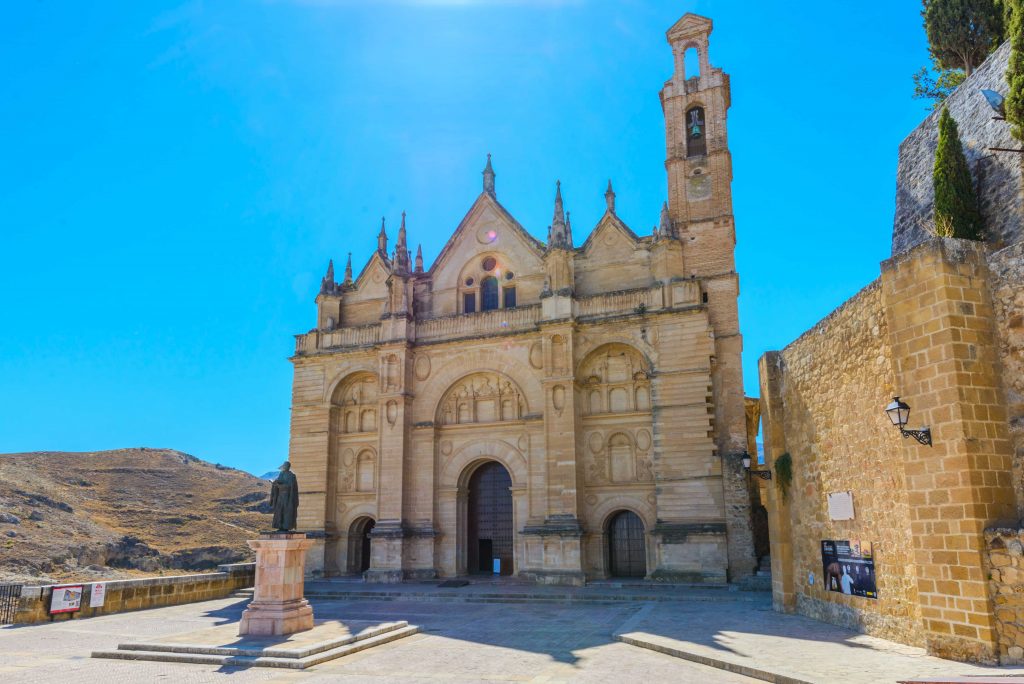
- Plaza de San Sebastián: in this square, you’ll find a Renaissance-style fountain at its centre and the Collegiate Church of San Sebastián.
- Convento de la Encarnación: One of Antequera’s oldest convents, belonging to the order of the Discalced Carmelites.
- Convento de San José and Museo Conventual de las Descalzas, founded in 1632 by the Discalced Carmelites of Saint Teresa. A highlight of the convent is the painting Virgin and Child venerated by Saint Michael, Saint Gabriel, Saint Ildephonsus and Saint Catherine. The museum displays a wide selection of artworks preserved by the nuns over time.
- Palacio de los Marqueses de la Peña de los Enamorados: Formerly a Carmelites school and one of the city’s most important examples of civil architecture. It once belonged to Don Martín de Rojas Manrique, who took part in the Christian reconquest of Antequera. The marquis title was granted to one of his descendants.
- Convento de la Victoria: Its most distinctive feature is the central balcony, flanked by two side balconies, giving it the appearance of a civil building.
- Convento de Santa Eufemia: A 17th-century convent dedicated to Antequera’s patron saint. The church that stands today dates from the mid-18th century.
- Iglesia de Santiago: This church has served as a parish since 1822, although construction began back in 1519.
- Puerta de Granada and Puerta de Málaga: The latter has been declared a National Monument and is a fine example of Muslim architecture in Antequera. It’s also known as the Hermitage of the Virgen de la Espera.
- Royal Monastery of San Zoilo: Also known as the Monasterio de San Francisco, it was founded by the Observant Franciscans in the 16th century and has been declared a Historic-Artistic Monument.
- Iglesia del Carmen: A former convent of the Discalced Carmelites and the only building in the province of Málaga with a full set of Baroque altarpieces.
- Arco de los Gigantes: A massive stone arch, over two metres thick, featuring inscriptions about Roman Antikaria and surrounding towns, along with a dedication to King Philip II.
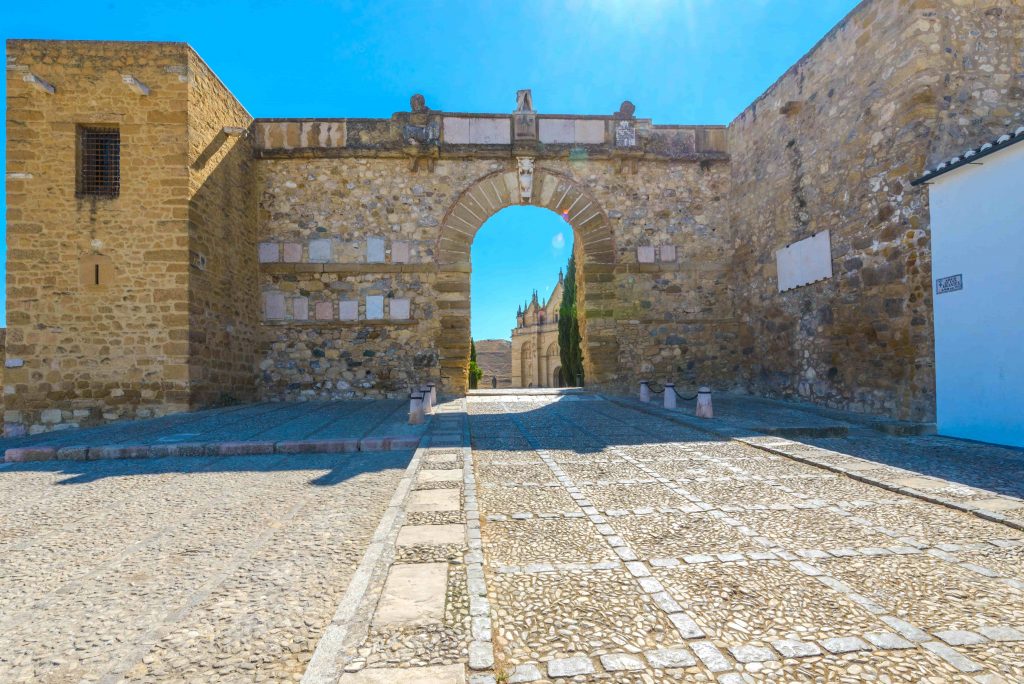
- Iglesia de Santa María de Jesús: A 17th-century church that has undergone several renovations after being almost entirely destroyed during the French invasion.
- Capilla-tribuna de la Virgen del Socorro: To reach it, you’ll need to walk up some steep streets, but the views from the top are well worth the effort.
- Iglesia de San Juan Bautista: This church houses the image of the Cristo de la Salud y las Aguas , the patron saint of the city.
- Iglesia de Santo Domingo: Inside, you’ll find the image of Nuestra Señora del Rosario, the apotheosis of Saint Thomas Aquinas above the tabernacle door, and the painting La Epidemia, which depicts Antequera during the plague of 1679.
- Bullring: With a capacity of 6,150, Antequera’s bullring is one of the most picturesque in Andalusia. It has been used as a filming location for adverts and even for Madonna’s “Take a Bow” music video.
- Convento de San Agustín: One of the oldest in the city, located in the square where all the brotherhoods gather during Antequera’s Holy Week processions.
Things to see in Antequera in 1 day
If you’ve only got one day to visit Antequera, we suggest an itinerary that blends nature, history and heritage, perfect for discovering some of the city’s most iconic sights.
In the morning, start your day at the Torcal. Follow one of its marked trails and take in the stunning karst landscapes. After your walk through this extraordinary natural setting, head over to the Menga and Viera Dolmens to connect with the city’s most ancient roots.
In the afternoon, spend time exploring Antequera’s old town. Start at the Alcazaba, then head to the Real Colegiata de Santa María la Mayor. From there, walk over to the Arco de los Gigantes, and finish your visit in Plaza de San Sebastián, one of the most iconic spots in the city centre.
As you’ve probably realised, Antequera has so much to offer. One day gives you a good overview, but if you really want to soak up its essence and explore all its hidden corners, we’d recommend staying longer and letting yourself be surprised by its history, culture and surroundings.
Historia de Antequera
The area around Antequera has been inhabited since the Palaeolithic period, thanks to the rich natural environment and favourable conditions that made it ideal for early human settlement. Bronze Age cultures are especially notable here, and their legacy is preserved in numerous remains such as the Dolmen Complex of Menga, Viera and El Romeral (all located near Antequera) as well as El Alcaide (Close to Villanueva de Algaidas). The dolmens are believed to date from between 2500 and 2000 BC, though some historians suggest they could be up to 4,000 years old.
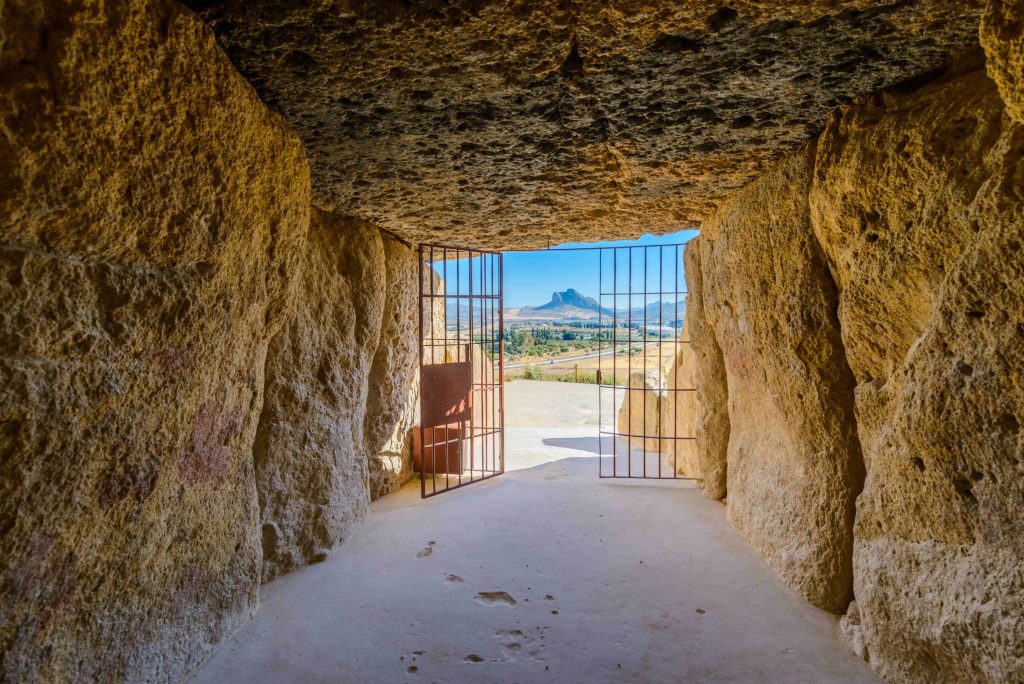
The foundation of Antequera as we know it today dates back to the Roman municipality of Antikaria, which notably housed the only College of Pontiffs of the Caesars in all of Spain.
During the Muslim era, the town was known as Medina Antaqira, and by the mid-13th century, the Crown of Castile had recognised its strategic importance. It was eventually conquered by Don Fernando (whose alias was “El de Antequera”), on 16 September 1410.
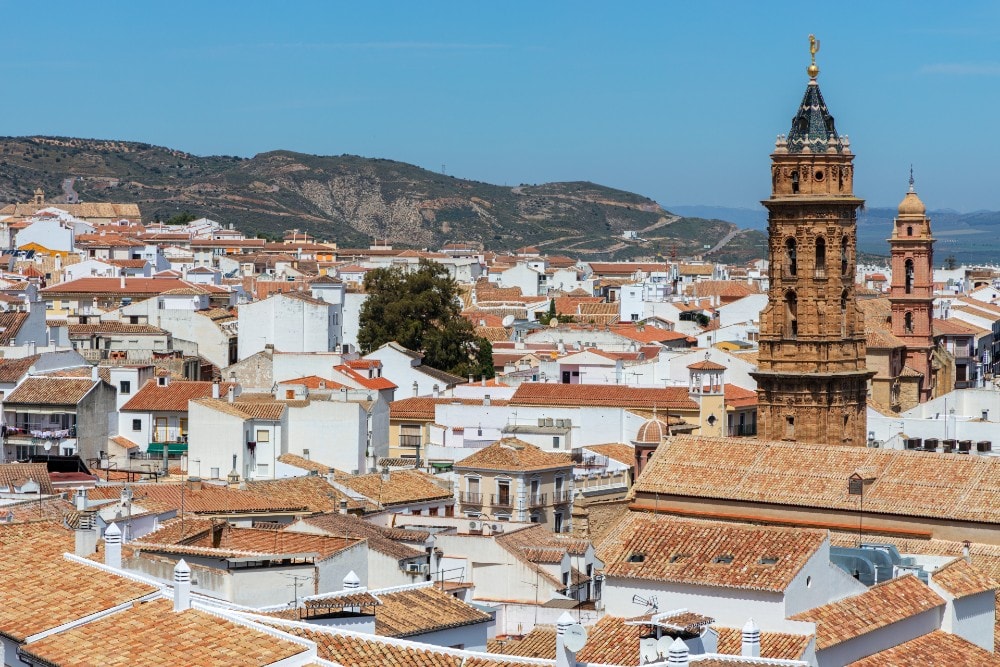
Although each era left its mark on Antequera, the Christian Reconquest was particularly transformative, as the town rose to become one of the region’s most influential centres, acting as a commercial hub between Seville, Granada, Málaga and Córdoba. This period also saw major urban development and the construction of some of Antequera’s most iconic buildings. It officially became a city on 9 November 1441.
Eating in Antequera
If you’re thinking about what to eat in Antequera, you’re in for a treat. The local cuisine is rooted in ingredients grown in the surrounding land, especially from the fertile plains of La Vega, featuring olive oil, seasonal vegetables, and cereals as key staples.
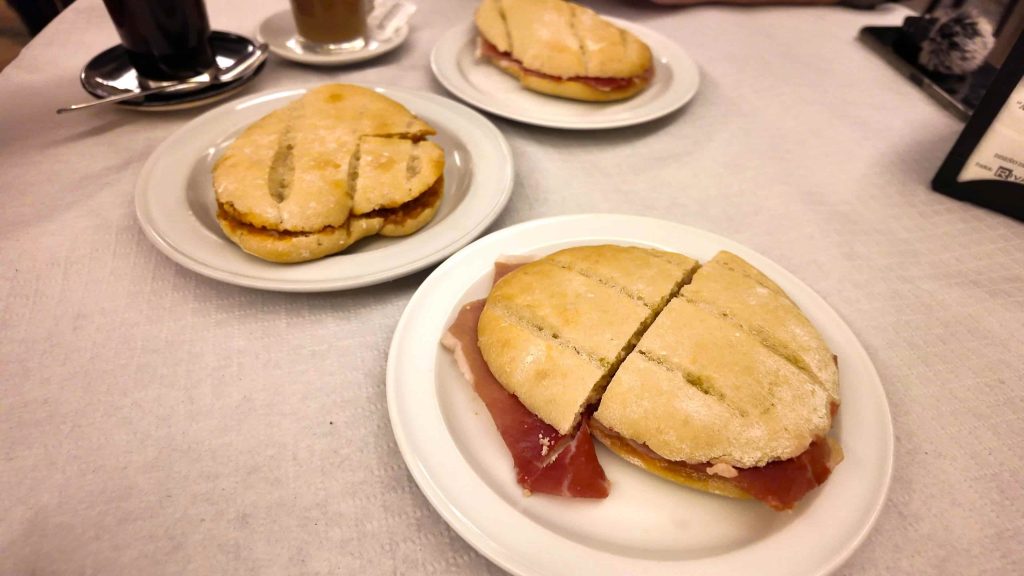
One of the town’s most iconic and recognisable products is the mollete antequerano. This soft, lightly baked white bread roll is perfect for breakfast with olive oil, or as the base for a sandwich with local ingredients. There’s no better way to start your day in Antequera than with a fresh mollete.
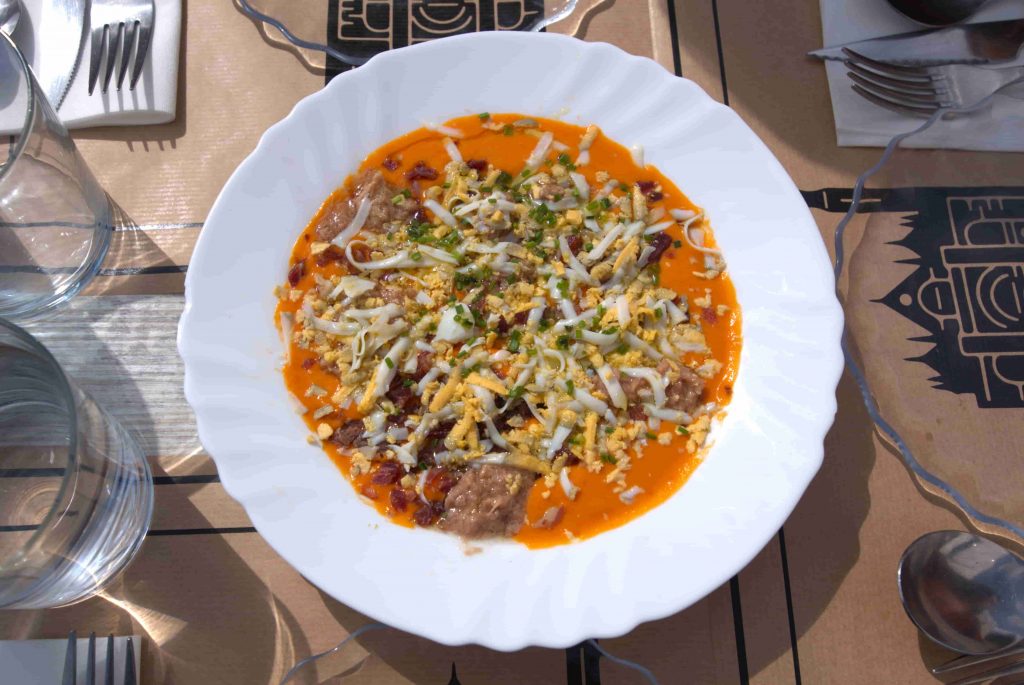
Another signature dish is the porra antequerana, a hearty, chilled soup made with bread, olive oil, tomatoes, peppers, and garlic. Its rich texture and bold flavour make it especially popular during the summer months.
Other traditional dishes worth trying include ajoblanco, gazpachuelo, and migas, each one reflecting the flavours and traditions of the Málaga region. When it comes to main courses, game meat and especially escabeche (a vinegar-based preserving method) stand out.
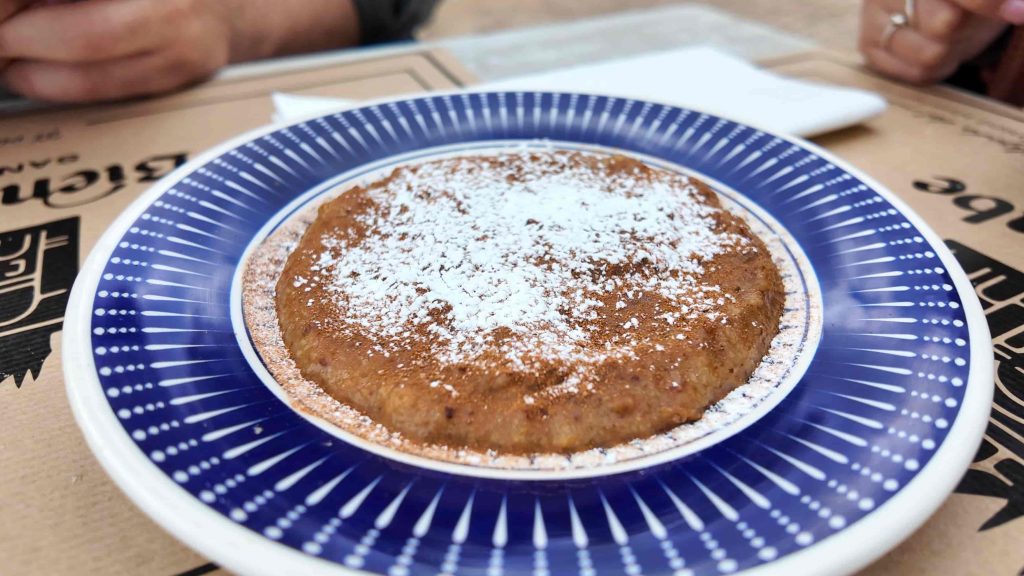
And for dessert, don’t miss the bienmesabe, Antequera’s typical sweet treat made with ground almonds, eggs and sugar. You can find it in local pastry shops or even better, at the Convento de Belén, where the nuns make it by hand using traditional recipes.
Festivals in Antequera
The local festivals and events in Antequera are a fantastic way to experience the town’s traditions and understand its unique character. One of the most curious features of the town is that it hosts two annual fairs, something quite unusual in Andalusia.
Holy Week
When: Between March and April
As in the rest of the Málaga province, Holy Week in Antequera has its own distinct traditions while sharing elements with other Andalusian celebrations. One standout event is the tradition known as “Correr la Vega”, where the processional thrones are carried up steep streets at a brisk pace towards the brotherhoods’ headquarters.
The Nueve Cofradías (Nine brotherhoods) take part, with processions held from Palm Sunday to Easter Sunday (except on Holy Saturday).
If you’d like to get a glimpse of the celebration, don’t miss the reel we’ve put together below. 👇
Señor de la Salud y de las Aguas
When: From the last Saturday of April to mid-May
This local devotion involves the transfer of the image of the Santísimo Cristo de la Salud y de las Aguas, the town’s patron saint, to the Church of San Juan Bautista. The following procession takes place on the Saturday after the 18th of May.
Spring Fair (Feria de Primavera)
When: Last weekend of May
Antequera’s Spring Fair, also known as AGROGANT (Agricultural and Livestock Fair), features food events, photography contests, livestock auctions and horse competitions.
Real Feria de Agosto (Royal August Fair)
When: Around the third or fourth week of August
Like the Feria de Málaga, Antequera’s Real Feria de Agosto is divided into the ‘Day Fair’ and ‘Night Fair’. The Day Fair is held in the town centre, while the Night Fair moves on to the fair grounds. The bullfights and bullfighting festival held parallel to the Fair are famous, together with the Dia del Caballista or Rider’s Day, (the Saturday) when, around noon, the Royal Ride starts, culminating in awards for best-dressed riders, horses, and couples..
Virgen de los Remedios
When: 8th September
On this day, Antequera holds a procession to celebrate its patron saint, whose image is housed in the Convent of Nuestra Señora de los Remedios. The procession normally takes place in the evening after mass, and goes from Calle Infante Don Fernando along Calle Lucena, Calle Cantareros and Calle San Luis.
Santa Eufemia
When: Saturday before 16th September
Santa Eufemia, co-patron of the town, is celebrated on the Saturday closest to 16 September, the day Antequera was taken by Christian forces in 1410. A solemn mass takes place the following Sunday.
Día de Jeva
When: 25th December
On Christmas morning, the town celebrates the Virgen de la Purificación at the Ermita de Jeva, located just south of El Torcal. The event includes a small procession, local sweets and live music performances.
Where to stay in Antequera
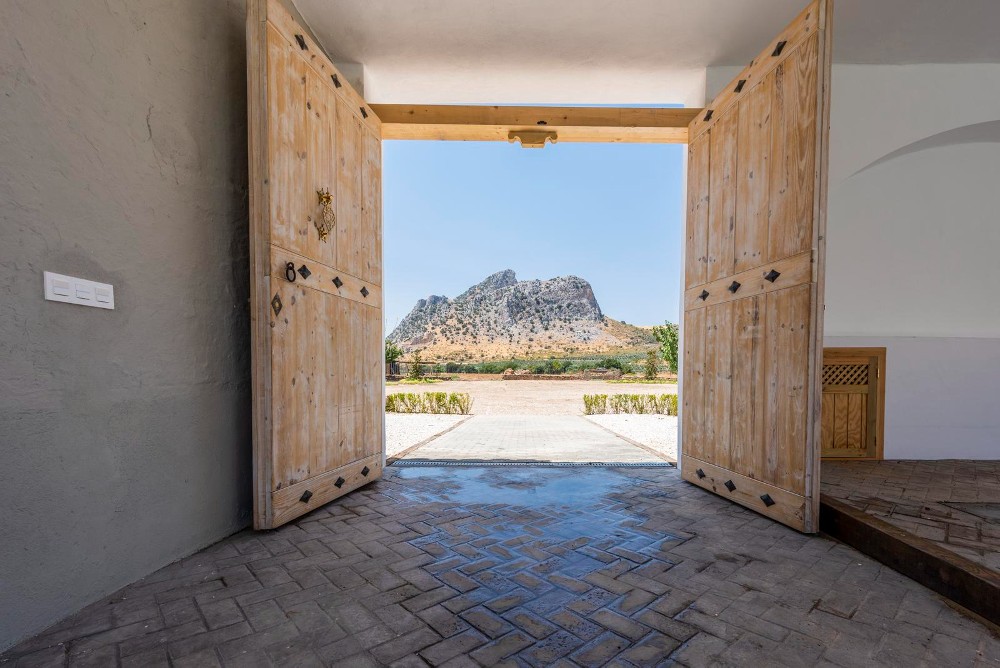
To make the most of your stay in Antequera, why not stay in some of the accommodations that capture the character of Antequera’s countryside. Holiday homes in Antequera feature fantastic private pools, luxury facilities and views that will take your breath away. If you don’t mind staying a bit further out of the town, then consider the district of Antequera, where you’ll find many holiday homes that combine comfort, privacy and scenic surroundings.
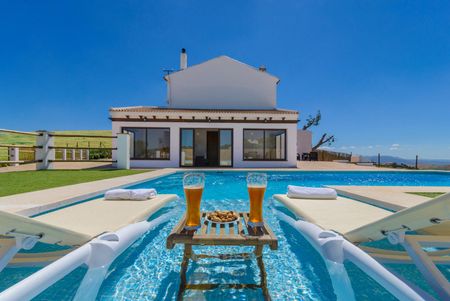
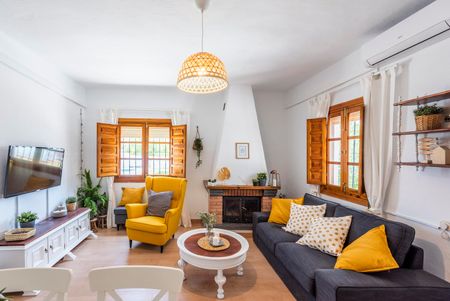
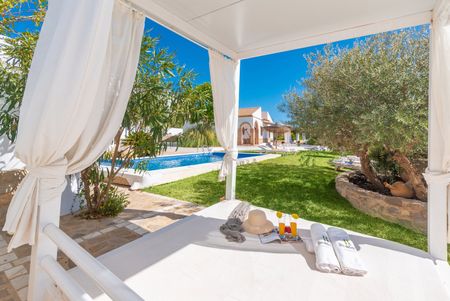
How to get to Antequera
If you’re travelling from Málaga to Antequera by car, the quickest route is via the A-45 motorway, also known as the Autovía de Málaga. Take exit 102 and follow the A-7282 road, which leads directly into the centre of Antequera.
If driving isn’t an option, you can also reach Antequera by bus or train. Buses leave from Málaga’s central bus station, and the journey takes around an hour. If you prefer travelling by train, Renfe operates high-speed AVE services between Málaga and Antequera. The journey takes just 20 to 25 minutes from Málaga María Zambrano station to Antequera-Santa Ana station.
Further information on Antequera
- Area: 794 km²
- Population: Just over 40,000 inhabitants
- Demonym: Antequeranos (residents of Antequera)
- Location: In the heart of the Antequera region, in the north of Málaga province, about 45 km from the city of Málaga. The town sits at an altitude of 577 metres above sea level.
- Climate: Average annual rainfall is just over 550 l/m², and the average temperature is 15.3°C.
- Official tourism website: https://turismo.antequera.es/
Antequera Tourist Office

Address: calle Encarnación, 4A (29200)
Phone: (+34) 952 70 25 05
Email: [email protected]
Opening hours: Mondey to Saturday from 9:00 to 18:30, and Sundays from 10:00 to 14:00. We recommend checking the official website before visiting to confirm current hours.
Is Antequera worth visiting?
After everything you’ve read, the answer is a resounding yes. Antequera impresses not only with the sheer number of monuments and historical sites it preserves, but also with its authenticity, natural surroundings, and unmistakable Andalusian charm. Whether you’re after a cultural escape or a relaxing break, you’ll find the perfect balance here.
If you are wondering what things to do in Antequera, come and experience for yourself what makes the ‘heart of Andalusia’ so unforgettable.

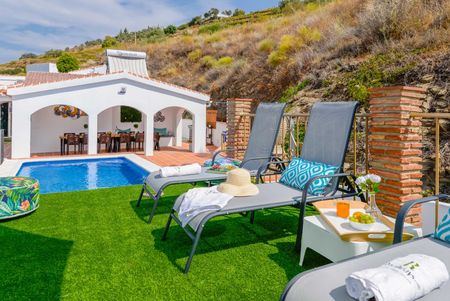


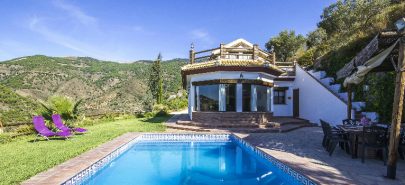
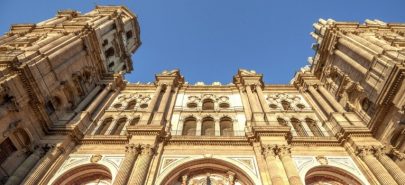

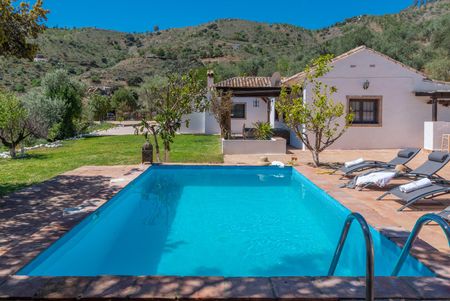

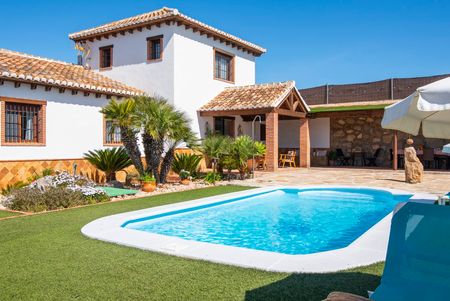
A few years ago, when enjoying a very relaxed two weeks in a finca in the hills of Sedella, we decided do some exploring and headed for Antequera.
It was a national holiday that day, so not much was open. We headed for the fabulous Alcazaba which was an interesting few hours walking around listening to the audio guide and taking in the awesome views as we went. By the time we were done, we’d worked up quite a hunger and on our way down came across this little restaurant that had a few tables out on pavement under the trees.
A Spanish nonna emerged from the restaurant with menus and showed us to a table… the menus were in Spanish and she rattled off some highlights of the menu. She didn’t speak a single word of English, and back then we didn’t know any Spanish (we have since started learning the language). A little while later she emerged carrying several plates of tapas that we’d kind-of-randomly chosen… each plate was oh-so-seriously tasty!!! Some of the best tapas we’ve ever eaten… you could say we’re somewhat discerning when it comes to tapas.
We often think back to that day and the awesome food we ate!! 😋😋